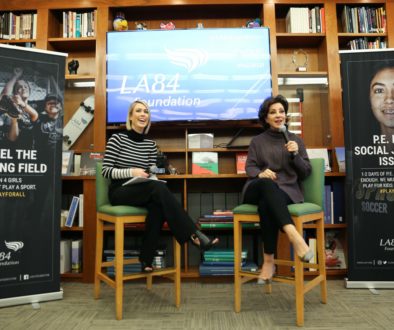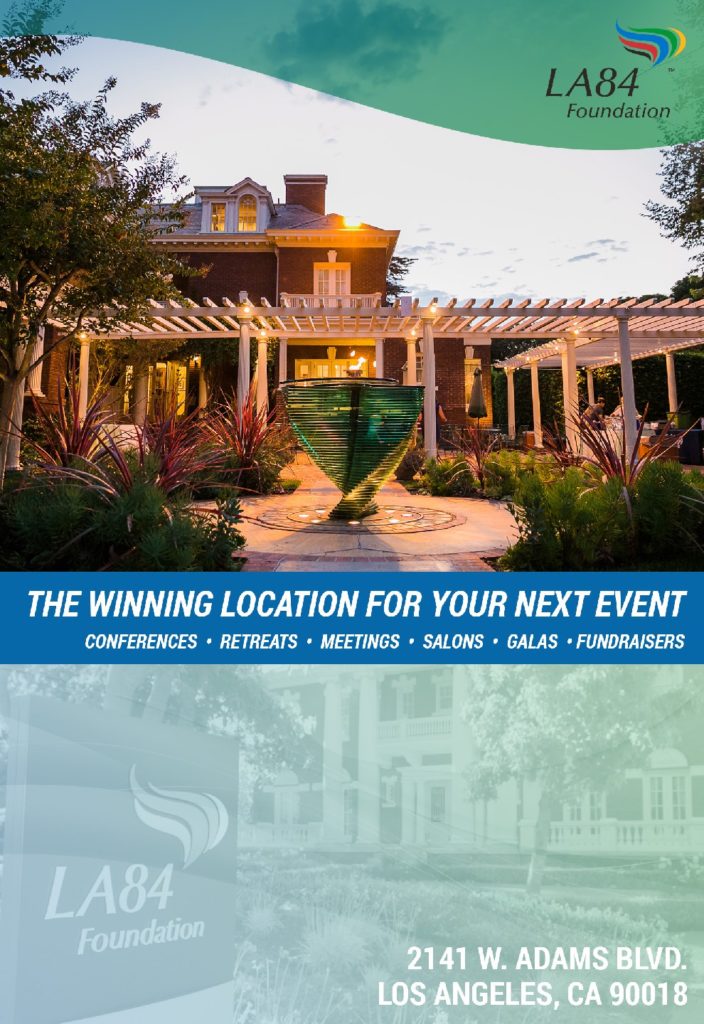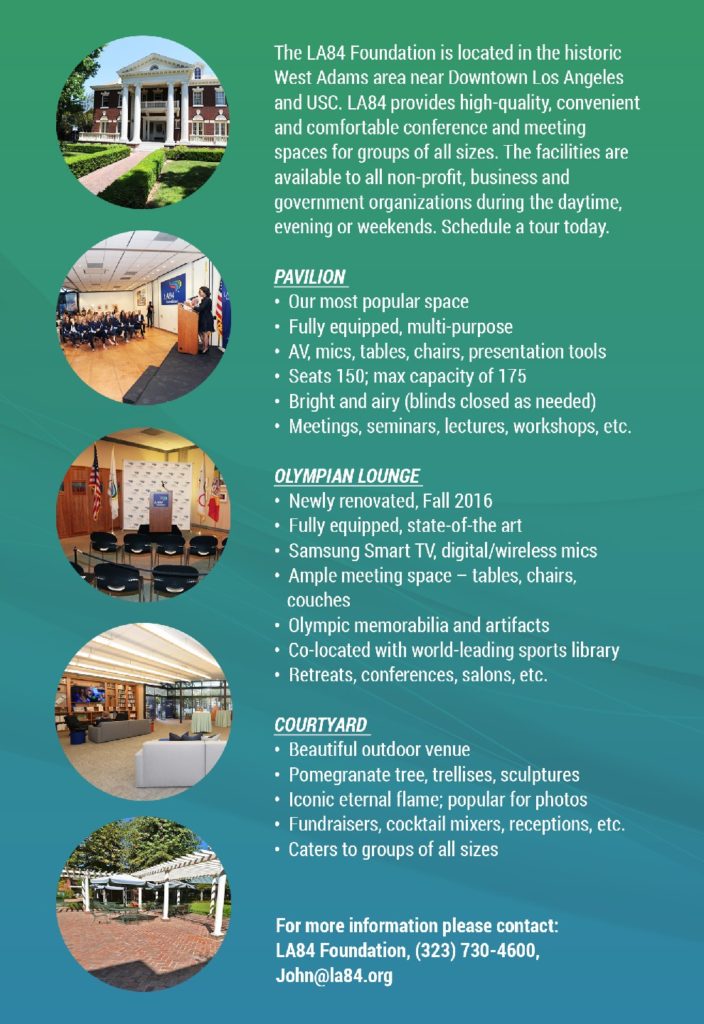SL Interview: Marshall Curry Documents the Youth Go-Kart Racing Circuit
First, there was “Hoop Dreams.” Then came “Spellbound.” Now comes “Racing Dreams,” the latest documentary film to focus on youth, sports and competition.
In 2007, acclaimed director Marshall Curry followed the fortunes of three youngsters who compete at the highest ranks of the go-kart racing circuit. The trio drive miniature racecars that can reach speeds of 70 miles per hour in a nationally sanctioned league called the World Karting Association.
As the documentary makes clear, karting is no kid’s game. Expensive and ultra-competitive, karting is viewed as a stepping-stone for professional racers on the NASCAR and Formula One circuits. Among the drivers who began their careers in karting: Michael Schumacher, Jeff Gordon, Juan Pablo Montoya and Tony Stewart.
Like “Hoop Dreams” (1994), which profiled two high-school basketball prospects, “Racing Dreams” is more than just a documentary film about youth sports. Intimate and sobering, “Racing Dreams” gives us a glimpse into the lives and thoughts of three youngsters on the verge of their teenage years.
Director Curry’s first feature-length documentary film, “Street Fight,” was nominated for an Academy Award in 2005. “Racing Dreams” won the Best Documentary Feature Award at the 2009 Tribeca Film Festival. Following a limited run in movie theaters nationwide this summer, “Racing Dreams” will be available on DVD this fall.
SportsLetter spoke to Curry via phone from his office in Brooklyn.
— David Davis
SportsLetter: Your first full-length film, “Street Fight,” was about the hotly contested election for the mayor of Newark, New Jersey. How did you come to choose kart racing for your second documentary?
Marshall Curry: NASCAR – and racing in general – was something that I didn’t really know much about. All I knew about NASCAR was that it was the second-biggest spectator sport in America, bigger than baseball, bigger than basketball. That was interesting to me, the fact that there could be this huge part of my own country’s culture that I didn’t know anything about. I wrote down “NASCAR” on a sheet of paper and dropped it in the file that I keep of ideas for documentaries.
One day I read an article about this racing series that is sort of the Little League for NASCAR. I went to a couple of races and met some kids and families and decided that it had the potential to be a real interesting story.
SL: So, you hadn’t done kart racing yourself?
MC: No. I’d never even seen a kart race until I went to explore it. You read that these things go 70 miles an hour and then you go and you watch 11- and 12-year-old kids racing go-karts that go that fast. It is really fast when you’re right there watching it happen.
SL: What is the world of karting like?
MC: There are a number of different national sanctioning bodies in karting. The kids in the film raced for the national championship in the World Karting Association. Most of the kids who race in this series are from the Midwest to the East Coast. There’s not a ton of kids from the West Coast. They have a different series.
SL: How does kart racing prepare young drivers for Formula One and NASCAR?
MC: I think that it prepares them in a lot of ways. There’s a lot of physical reflex type skills that they learn, including the skill of driving – how do you maneuver a car through traffic and how you draft another car, where you ride up behind someone and they’re cutting the wind for you. Also, they learn about strategy. I would hear the kids talk about knowing when they should be patient and about waiting for the strategic point in the race to make their move.
SL: How did you settle on the three principal subjects – Annabeth Barnes, Josh Hobson, and Brandon Warren – of the film?
MC: I knew from the beginning that I didn’t want to make another kid competition film, where you take 10 kids and you do a little profile about each of them and find out who becomes the champion. “Spellbound” had done that perfectly, and I felt like it didn’t need to be done again. I was looking for specific characters – and it didn’t matter whether they raced against each other or not – because I wanted the film to be a profile of adolescence as much as a movie about go-kart racing. The year that we focus on, when the kids are 11-, 12-, 13-years-old, is such a pivotal year in making us who we are. You’ve got one foot in childhood and one foot in young adulthood, and you’re really starting to discover who you are, what your relationship is with your parents, what romance feels like for the first time, and all these other things.
When I was first exploring the idea, I went to a race and just asked around to the flagmen, the guy at the concession stand, parents, kids: “Are there any kids that you think I ought to talk to?” One name kept popping up over and over. People would ask me, “Have you spoken to that Josh Hobson kid? You might want to talk to him.” I found Josh as he was coming off the track having just won his fourth grand national race. I talked to him for 15 minutes, and he’s an amazing kid: he’s super articulate, he’s kind of an adult in a child’s body, a mini-Jeff Gordon. After meeting him I thought, “There really is a movie here. I want to do this thing.”
I went back to raise the money to make the movie, and then we went to the awards ceremony later that year. The awards ceremony was next door to this huge annual karting convention. I took a few people with me to the convention, and we fanned out and met 75 kids and asked them a bunch of questions so that we could discover how articulate they were. Questions like, “Why do you like racing? What kind of books do you like to read? What do your parents do for a living? Do you believe in God?” And, Annabeth and Brandon just sort of popped out.
SL: How would you describe Brandon and Annabeth?
MC: Brandon is a great racer, very talented, but has a bit of a temper. The year before the movie, he should have won the national championship, but was disqualified in the last race for rough driving. He’s struggling with that. He lives with his grandparents because both his parents are not part of his life. Then, his father comes back into his life and that creates a conflict that is unraveled during the film.
Annabeth is 11 years old. She’s one of the very few female racers. Her father was a racecar driver, and she has always, since she was a little girl, dreamed of being the first woman to win the Daytona 500. She’s a girl in a boy’s world, and that is part of her story. She’s also struggling because, while she loves racing, she gives up a lot for her racing. She races 48 weekends a year, so she’s away all the time, or working on the kart. Over the course of the movie, she starts to wonder whether the sacrifice is worth it.
SL: Were there any other female drivers on the kart circuit?
MC: Annabeth was in the very, very small minority. I think there was one other one on the circuit that year. But I think that it’s becoming more and more common, even in the years since we made the movie. I don’t know if Danica Patrick had anything to do with that, or if it’s just a more general acceptance of girls doing sports that have been traditionally considered guys’ sports.
SL: How did the three handle the demands of the filming?
MC: They were great. They’re all very confident, very smart, very charismatic. The first time we went to shoot, they were nervous to be around the camera. But over time, we became sort of like family. I spent a lot of time with all of them, and our crew and our shooting style was very low impact. It would be two people usually, either I would shoot with a sound person, or I would do sound with a shooter. We don’t set up lights. We don’t have microphones that are hanging in peoples’ faces. We shot it with a compact, high-definition camera. It’s not a very intimidating process, and they got used to it after a while and revealed who they are.
SL: You had quite a bit of access with the families, in their homes and workplaces. Were there any restrictions?
MC: They did not have any specific restrictions. I told them at the beginning that the movie was going to be a portrait of their lives as much as it would be about racing. I knew that what was happening off the track was just as important, if not more so, as what was happening on the track. I thought they were extremely generous in their willingness to share intimate moments with the audience. In Brandon’s case, his father was struggling with drugs and that was shown in the movie. The family was willing to let people see that side of their lives. Thankfully, his father has since cleaned up and has been sober.
SL: How much conflict was there between the kids just enjoying the sport versus feeling pressure to move on to the Formula One or NASCAR circuits?
MC: It is a conflict, because all of them sacrifice something for racing, and I think it’s particularly played out in Annabeth’s story. There’s a moment in the movie where Annabeth is working late at night on the kart, and she’s kind of complaining about everything she’s had to give up, and her father says something like, “I don’t want her to not have a childhood, but if you want to be a professional anything, whether it’s tennis or golf or piano or whatever, you have to sacrifice some things.” So, that’s the decision that she has to make: Is it worth the sacrifice? It’s an important question outside of racing, of course. It’s universal.
SL: How would you describe the parents of the children: were they “Little League parents”?
MC: When I went into it, I heard from other people that there are parents that are really pushy, with these dads screaming at their kids. None of the families were like that. I grew to really like all the families and all the kids. I don’t think that any of the kids were doing something that they didn’t want to do. All three of the kids love racing. But the parents did make it clear that, if you want to be a professional racecar driver, there are sacrifices that have to be made. You do give up part of your childhood when you want to be a professional, and I think both the kids and their parents wrestled with that. I think that, in Annabeth’s case, she struggled between her love of racing and her desire to be a regular kid.
SL: Did you feel that the kids were forced to race by their parents?
MC: They definitely weren’t forced to race. There was probably pressure, and I think you see that in the movie. But they all love racing. They weren’t doing it against their will.
SL: The concept of concentrating on one sport or activity from a young age – call it the Tiger Woods training method – has its advantages and disadvantages. Can someone succeed at racecar driving if they take it up a later age?
MC: There are examples of professional racecar drivers who started racing at age 14 and probably older. But it’s incredibly competitive. I mean, if you want to be Tiger Woods, you probably can’t pick up your first golf club at 12. Maybe you don’t want to be Tiger Woods. Maybe you decide that there are other things that are more important than being a professional golfer. But it’s naïve to think that you can have it all, and just play when you want to and still become the best golf player in the world. I don’t think the parents want it to be this way, but this is the reality.
SL: Do you think Annabeth will continue to race as she grows older?
MC: She has been. After the movie, she won two national championships in go-karts. Then she moved into an intermediate sized car called a “bandolero,” where she raced mostly against boys much older than she was, and did really well. I think she’s just finished her first race in a full-sized car. So, she’s still at it.
Josh is also still racing – he’s racing a full-sized car now. He’s been racing against adults, and he’s had a number of Top 5 finishes.
SL: Karting can’t be a cheap sport, and the three children you focused on did not seem to come from wealthy families. How does that factor into their racing futures?
MC: It’s a really expensive sport. In some ways, it’s so different from the stick and ball sports, like baseball or basketball, where you just get a ball and go down to the local court and you play. If you happen to be a great basketball player and you can hit a lot of jump shots, people will notice it and you can get a college scholarship.
In racing, you can be the greatest driver in the world, but if you’re not in a good car, you can’t win races. And, good cars take money. So, it’s much more difficult to demonstrate your skill. That’s part of the movie, where the families are looking for sponsors and trying to figure out what they must sacrifice in order to finance the racing, in order to pursue this dream.
SL: In the film, you showed one accident in which a child was injured. Did you see many accidents during filming? Is kart racing dangerous for children?
MC: It is more dangerous than golf certainly, but less dangerous than you might think when you consider that it is 12-year-old kids driving go-karts that go 70 miles an hour. There were quite a few accidents, but even the accidents that you see in the movie that look horrendous, those kids got up and raced the next day. I never saw a race where someone was seriously hurt. But I would never let my kids race (laughs).
SL: The title of the film, “Racing Dreams,” evokes the documentary “Hoop Dreams.” Did “Hoop Dreams” influence this work?
MC: I loved “Hoop Dreams” when I saw it years ago. Of course, I watched it again because it’s a model of verité filmmaking. It’s an amazing portrait of life off the basketball court as well as on. It definitely influenced the way I was thinking of the movie.
SL: Were there other youth-themed documentaries, like “Spellbound,” that influenced “Racing Dreams”?
MC: I loved “Spellbound.” It is an amazing movie. It generated a lot of kid-competition movies, like about ballroom dancing and double-dutch jump-roping, many of which are great. But I didn’t think the world needed another one of those. I consciously decided to not make a film about a lot of kids competing for something and finding out which among them will be the champion. For me, who wins or loses in the karting races is kind of peripheral. I was much more interested in the three characters and what happened to them in their lives. If they came in fifth or ninth place, it didn’t matter.
SL: The actor Dwayne Johnson, also known as the wrestler The Rock, is an executive producer on the film. How did that come about?
MC: He has a foundation that finances independent and documentary movies. While we were shooting the movie, the company that was financing the film brought them in as a partner on the project. I think he was also interested in the project because he has a foundation that educates kids through physical fitness.
SL: The film’s soundtrack features music from, among others, Steve Earle, the Vines, the White Stripes, and the National. How did that happen?
MC: I’m good friends with Matt Berninger, the lead singer of the National – we worked together at an Internet design company a while ago. They were very generous and even recorded some music for the film. The others were just bands that I liked. We reached out to them, showed them the film, and they were willing to help us out. We were very lucky
SL: What’s your next documentary project?
MC: As I was shooting “Racing Dreams,” I was shooting another film at the same time. It’s about a radical environmentalist who burned down two timber facilities in Oregon. He’s in prison now. I’m editing that one for PBS and the BBC.




